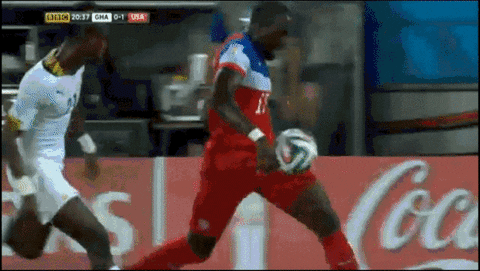It was a regular occurrence; our band would be given a water break halfway through rehearsal, and I would have a student come up to me. One hand would be holding her instrument and the other would be clutching the back of her leg.
“My leg is really hurting me,” the student would say. Her grimacing facial expression confirmed it.
My immediate response was, “What happened?”
The next sentence always started with, “We were doing the jazz run…”
I knew the end result – she has sustained a hamstring strain. This was not the first time a student fell victim to the jazz run and it wouldn’t be the last.
 Hamstring Strains
Hamstring Strains
If you are unfamiliar with the hamstrings, they are the muscle group on the back of the thigh. A strain to the hamstrings mean that there is a tear in the muscle. Hamstring strains are one of the most prevalent injuries in sports that involve sprinting or jumping(1,2). While you may not picture marching band as a “sprinting or jumping” sport, hang in there and I’ll explain everything.
Anytime you stretch your leg in front of you while keeping the knee straight you are lengthening out the hamstring muscles. This motion occurs as marching band students take long strides forward, such as during jazz running.
This motion is also commonly performed in soccer – as a player kicks or reaches for the ball his leg stretches forward while the knee stays fairly straight. If the leg stretches too far forward, the hamstrings are excessively lengthened and can suffer a tear. This mechanism happens to be one of the most frequent ways that the hamstrings are strained, and this is why hamstring strains are so prevalent in the sport. What most people don’t realize is that the same injury concepts in soccer apply directly to marching band.
 How do we prevent it?
How do we prevent it?
Jazz runs are a huge component of marching for bands that use drum-corps-style marching technique. Just like a soccer player cannot eliminate kicking from the game, we cannot eliminate jazz running from marching. Because of that, we must work to prevent hamstring injuries.
1. Get stronger
Multiple studies have pointed out that weakness in the hamstrings puts individuals at higher risk of suffering a hamstring strain(3). There are several different exercises for hamstring strengthening: hamstring curls, straight leg deadlifts, bridges. To get the most benefit, focus on controlling the portion of the exercise where you are straightening your leg (eccentric motion) to mimic the highest demands of marching(4).
 2. Stretch
2. Stretch
Increasing hamstring flexibility can decrease risk of injury(5). The most effective hamstring stretch is lying on your back and pulling your leg up while keeping the knee straight (see below). Hold it for 30 seconds and perform 3 reps on each side.
 3. Increase Your Endurance
3. Increase Your Endurance
As your body gets tired your marching technique worsens, putting you at a greater risk of injury. In soccer, there was a significantly higher rate of injury at the end of each half when players are the most fatigued (6). Improve both your cardiovascular and muscular endurance to help combat the fatigue you’ll experience due to marching.
Be Proactive
Marching bands, drum corps, and WGI groups continue to raise the bar for what can be accomplished during a performance. This increases the physical demands on young performers, making it even more imperative that a preventative approach is taken towards the members’ health. Establishing injury prevention programs and conditioning in the preseason and during competition season are vital to the advancement of the marching arts activities.
Social Media:
If you enjoyed this blog, please follow us on social media! Marching Health is on Facebook, Instagram, Twitter, and Youtube @MarchingHealth. Your support means the world!
References:
1. Ekstrand J, Gillquist J. Soccer injuries and their mechanisms: a prospective study. Med Sci Sports Exerc1983;15:267–70.
2. Garrett WE Jr. Muscle strain injuries. Am J Sports Med1996;24 (6 suppl) :S2–8.
3. Opar DA, Williams MD, Timmins RG, et al. Eccentric hamstring strength and hamstring injury risk in Australian footballers. Med Sci Sports Exerc 2015;47:857–65.
4. Askling C, Karlsson J, Thorstensson A. Hamstring injury occurrence in elite soccer players after preseason strength training with eccentric overload. Scand J Med Sci Sports2003;13:244–50.
5. Hartig DE, Henderson JM. Increasing hamstring flexibility decreases lower extremity overuse in military basic trainees. Am J Sports Med1999;27:173–6.
6. Woods C, Hawkins RD, Maltby S, et al. The football association medical research programme: an audit of injuries in professional football: analysis of hamstring injuries. Br J Sports Med 2004;38:36–41.
Image 1: https://www.tumblr.com/search/drum%20techniques
Get to Know Elliot:
Elliot founded Marching Health with the purpose of making the marching arts a safer, healthier activity for young people. He works with marching bands, drum corps, and WGI groups to help the members be at their peak physical condition and health. He is currently the physical therapist and drumline instructor for the Bands of America Grand Nationals Finalist Wando High School Marching Band. For more information, contact Dr. Elliot Cleveland at elliot@marchinghealth.com

